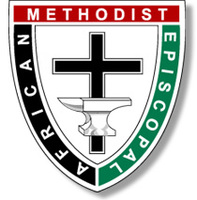
The African Methodist Episcopal (A.M.E.) Church originated in 1787 when Black worshipers, led by Richard Allen and Absalom Jones, left the mixed-race Methodist Episcopal Church in Philadelphia to establish the Bethel A.M.E. Church of Philadelphia, the mother church of the denomination. The A.M.E. Church in doctrine and polity largely agrees with the Methodist Episcopal Church. Its Book of Discipline is modeled after practices in the original Methodist Episcopal Church. Minor differences have developed over the years. A.M.E. bishops have more power than their counterparts in the Methodist Episcopal Church, for example, but the main difference remains racial identity.
The African Methodist Episcopal Church sent missionaries to aid slaves in Western Virginia immediately following John Brown’s raid on Harpers Ferry in 1859. Throughout the Civil War, additional workers moved south on the heels of Union soldiers. Between 1870 and 1926, numerous A.M.E. churches were organized throughout West Virginia.
Socially and politically active, the denomination rapidly gained membership in the South following the Civil War. When the Wheeling District of the Pittsburgh Conference assembled in Charleston in May 1907, Rev. S. B. West, presiding elder of the Wheeling District, asked for a separate West Virginia Conference in his annual address. The process moved forward the next year when, in May 1908, West presented a bill calling for a separate West Virginia Conference to the General Conference held at Norfolk, Virginia. The bill, with a single amendment that left Jefferson County attached to the Virginia Conference, was adopted, making West Virginia a separate conference attached to the Third Episcopal District. When the conference was organized in October 1908, members appointed Rev. W. R. Derrick as presiding bishop, S. B. West as secretary, and W. R. Derrick, J. Harris, and H. E. Tyler as presiding elders.
The number of West Virginia A.M.E. churches, along with church membership, grew in the first decades of the 20th century but began to decline in the mid-1930s. In 1906, there were 35 churches with 1,002 members in West Virginia. In 1919, 33 churches had a membership of 1,325. Churches and membership increased by 1926, to a total of 64 churches and 2,298 members. By 1936, the number of African Methodist Episcopal churches in West Virginia declined to 40. As of 2010, there were 23 churches belonging to the Third Episcopal District located in West Virginia. These churches remain a vital presence in the state, providing spiritual, social, and economic support to their communities.
This Article was written by Connie Park Rice
Last Revised on September 29, 2023
Related Articles
Sources
Gregg, Howard D. History of the African Methodist Episcopal Church. Nashville: AMEC Sunday School Union, 1980.
Lincoln, Eric C. & Lawrence H. Mamiya. The Black Church in the African American Experience. Durham: Duke University Press, 1990.
Cite This Article
Rice, Connie Park "African Methodist Episcopal Church." e-WV: The West Virginia Encyclopedia. 29 September 2023. Web. 18 April 2024.


Comments?
There aren't any comments for this article yet.
Click here to read and contribute to the discussion →